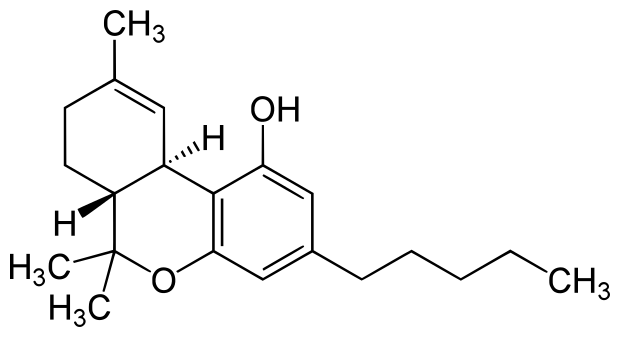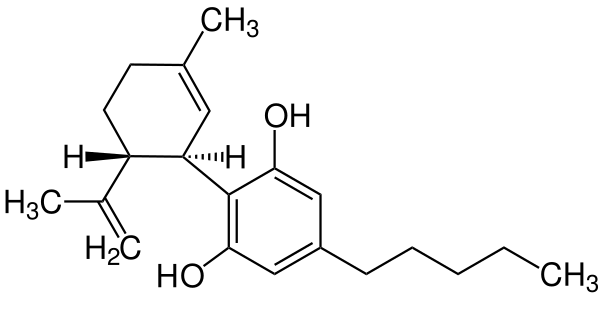Info
GENERAL INFORMATION ABOUT CANNABIS
Cannabis Information
Cannabis originates from the hemp plant and comes in two forms, weed and hashish.
‘Weed’ is derived from the English word ‘weed,’ meaning ‘unwanted plant.’
Hashish, or hash, is the resin, which can vary from almost liquid and oily to very hard.
These variants are extracted from the flower buds (or preferably seed pods) of the plant, preferably from the female, unfertilized plant (sinsemilla).
Weed or marijuana comes from the green-brown tops of the plant.
THC
Tetrahydrocannabinol, or THC, is the primary psychoactive compound in cannabis.

CBD
Cannabidiol (CBD) is a non-psychoactive cannabinoid in cannabis.

Interaction of CBD and THC
Research suggests that CBD may influence the psychoactive effects of THC, but studies on this matter yield conflicting results. Much depends on the method of administration and the ratio between the two cannabinoids. With a relatively high amount of CBD compared to THC, CBD can diminish the effect of THC, while at approximately equal amounts, CBD may enhance the effect of THC. The timing of administration also matters: when CBD is taken before THC, it can amplify the effect of THC. When both substances are taken simultaneously, the effect of THC may be reduced.
How does cannabis work?
In cannabis varieties, more than 60 cannabinoids are produced, with the psychoactive tetrahydrocannabinol (THC) and the non-psychoactive cannabidiol (CBD) being the most prevalent. Cannabis use is associated with euphoria, altered perception, persistent laughter, sedation, lethargy, slowed time perception, difficulty with body coordination, challenges in performing complex mental processes, impaired judgment, and social withdrawal. Additionally, increased appetite, dry mouth, and tachycardia may occur approximately two hours after cannabis consumption, corresponding to the plasma peak of THC, which occurs around 2 to 4 hours after smoking cannabis.
When cannabis is incorporated into edible products, the onset of effects takes much longer. There is also a risk of overdosing. The effects of cannabis in edible form often begin around one and a half hours after consumption and can last up to 24 hours.
In the Netherlands, under criminal law, cannabis and its derivatives are classified as soft drugs; however, in many other countries, there is no distinction between soft and hard drugs, and strict penalties apply.
Some individuals use medicinal cannabis for medical reasons. Similar to alcohol, driving under the influence of THC is a criminal offense according to traffic laws when operating a vehicle on public roads.
Use cannabis
Recreational Use
Cannabis can be used as a psychoactive substance in various ways. A popular method is smoking a mixture of crushed hemp flowers and tobacco in a rolled cigarette paper with a homemade paper filter, commonly known as a joint. Cannabis can also be smoked ‘pure’ in a joint or in different types of pipes, such as a water pipe. Another method involves incorporating cannabis into food. A well-known example is the space cake, where the flower or resin (hash) is baked into a regular cake. Weed butter or weed cream consists of animal fats that have absorbed THC through soaking in a cannabis-infused bath, allowing the THC to bind to the fat.
Medicinal Use
Since September 1, 2003, medicinal use is allowed in the Netherlands, and marijuana is available by prescription from a pharmacy. Medicinal cannabis can provide relief for sleep issues and chronic pain. For medical applications, it is recommended to use a vaporizer, as it is less harmful than smoking.
Cannabis Production
Several seed companies in the Netherlands specialize in producing commercial varieties of hemp, which are exported worldwide. The seeds of feminized cannabis are cultivated to produce female plants. Autoflowering plants are also much smaller than the ‘regular’ ones, making them suitable for cultivation in small spaces or on balconies. Through selective breeding, hemp plant varieties have been developed to yield high THC content.
The hemp plant requires ample light, typically provided by so-called ‘grow lights’—lights that consume a significant amount of energy.
Legal Status (Wikipedia)
Netherlands: In the Netherlands, drug policy has differed from that of other European countries since the early 1980s. The sale of up to 5 grams to adults is tolerated in designated coffee shops. Users are not prosecuted unless a local ban on public cannabis use has been imposed. If prohibited through the General Local Regulation, it is not allowed to use cannabis, hash, or other psychoactive substances outdoors on the street. The general fine for this can be up to a maximum of 180 euros (2008). Recreational use is tolerated if consumed in a coffee shop or at home.
The cultivation of marijuana is, with exceptional circumstances, illegal in the Netherlands, and there is an active enforcement policy. Possession of up to 5 plants is tolerated by law enforcement and only prosecuted in a few cases. Only the cultivation of cannabis for medicinal purposes is legal, but it must be entirely under state supervision. In 2008, the Netherlands had one legal cannabis cultivation facility where marijuana with high THC content is produced under sterile conditions. Medicinal use is allowed with a doctor’s prescription. There were plans to introduce a weed pass (2010).
Health
Risks
– Cognitive Functioning
– Psychosis and Schizophrenia
– Depression
– Other Illnesses
Medical Use
Cannabis is the most popular drug in the Netherlands. In 2017, approximately 20% of the Dutch population above the age of 18 had ever used cannabis. In the past year, 7% of the population, and in the past month, 4.5% (about 540,000 to 680,000 individuals) reported use. Cannabis is mainly used at home. It is estimated that 1% of the adult population (110,000-170,000 individuals) uses cannabis daily or almost daily.
In 2015, 11,000 people were undergoing treatment for a primary addiction to cannabis in addiction care. Thirty percent of these patients were in treatment for the first time that year. Thirty-five percent of these individuals had a secondary addiction (with one-third involving alcohol and 18% involving cocaine). Additionally, 4,500 patients had cannabis as a secondary addiction. The majority of them were primarily addicted to alcohol (50%), followed by cocaine (20%).
Cannabis Plant Varieties
Cannabis sativa
Cannabis sativa originates from warm regions and can grow up to 6 meters tall under ideal conditions. It has long, thin leaves and predominantly contains tetrahydrocannabinol or THC, which, depending on the strain, produces a ‘high’ or ‘stoned’ feeling when consumed. Cannabis sativa requires a lot of light and has a long flowering period. This variety is also used for fiber production. The THC content is higher in the female plant than in the male plant.
Cannabis indica
Cannabis indica originates from the Hindu Kush mountain range in Afghanistan and is a robust plant resistant to diseases and fungi. It can thrive in colder regions. In addition to THC, it contains more cannabidiol (CBD), resulting in a more relaxing sensation after consumption. This plant has thicker leaflets compared to its Cannabis sativa relative.
Cannabis ruderalis
“Cannabis ruderalis grows wild in parts of Central Europe and Russia and is characterized by an early flowering period, some of which is independent of the photoperiod. The plant reaches up to 1.5 meters, is more branched, and grows in a bushier form.”
Naamgeving cannabis
Wiet
Wiet: met de vertaling in het Nederlands van The Cultivator’s Handbook of Marijuana van Bill Drake in 1972 door Theo Uittenbogaard met als titel Het Wietboek ISBN 90-6012-175-9 verscheen niet alleen voor het eerst in Nederland het woord wiet in druk (als klanknabootsing van het Engelse weed = ‘onkruid’), maar werd ook een kweekmethode geïntroduceerd waardoor met behulp van het zeer giftige plantenveredelingsmiddel colchicine de erfelijke eigenschappen van de plant kan worden gewijzigd. Door de behandeling met colchicine ontstonden er polyploïde planten. Deze polyploïde planten hadden een aanzienlijk krachtigere hallucinogene werking, hogere opbrengst, en zouden later bekend worden onder kwaliteitsaanduiding skunk.
Gras
Gras: (vgl. Engels grass en weed, Spaans hierba, porro en motta, Grieks χόρτο).
Marihuana
Marihuana: de oorsprong van de bijnaam ‘marihuana’ is onbekend. Een theorie is, is dat het waarschijnlijk afgeleid is van de veel in het Spaans voorkomende vrouwennamen Maria en Juana (vgl. Engels Mary Jane). Het zou ook kunnen verwijzen naar de Spaanse term voor oregano: mejorana.
Nederwiet
Nederwiet: Benaming voor in Nederland in kassen gekweekte marihuana (kaswiet). Afgeleid van Northern lights, een in Californië ontwikkelde cannabisplant met een gemiddeld THC gehalte tot wel 15% .[47] Ingevoerd naar Nederland in de jaren zestig. Nederwiet wordt ook als benaming gebruikt voor buitenwiet, die onder de zomerzon wordt gekweekt. Deze wiet is meestal minder sterk en minder compact. Een eigenschap van de nederwietplant is dat deze vroeg bloeit (eind september) en hierdoor geschikt is voor het Nederlandse klimaat.
Skunk
Skunk: een in Nederland gekweekte sterkere cannabisvariëteit.
Hasjiesj
Hasjiesj: ook wel hash genoemd, is een cannabisproduct dat bestaat uit een geconcentreerde koek van de hars van bladeren en bloemen van de plant. De kleur kan variëren van zwart tot goudbruin. Het kan gerookt of gegeten worden.
Haze
Haze: Sterke, kruidige smaak en geur. Zeer hoog THC-gehalte. Soorten: silver haze, purple haze, lemon haze, amnesia haze, cheese, Boeda haze.
white widow
White widow: white widow was de eerste van de THC-rijke witte soorten. White widow is zeer populair en in vele coffeeshops te vinden. White widow is een kruising tussen een Indiase indica en een Braziliaanse sativa.
Power plant
Power plant: een zeer populaire soort, die in Nederland voornamelijk in stek te verkrijgen is. Dit is zonder meer een van de vaakst gekweekte soorten in Nederland, omdat het een zeer sterke plant en makkelijke soort is die toch een “lage” struik bezorgt aan de gebruiker.
K2
K2: Bekende nederwietsoort, populair in Nederland en België, wordt vooral gebruikt voor massaproducties.
Kush
Kush: Kush is een cannabissoort van de indicavariant. Er zijn vele vormen zoals Bubba Kush en OG kush. Kush-cannabis stamt af van planten uit Afghanistan, Iran, Pakistan en het noorden van India. De naam verwijst naar het gebergte Hindoekoesj.
Kush is een van de cannabissoorten die door de Britse firma GW Pharmaceuticals legaal geteeld wordt voor een proef met medicinale cannabis.
Thai
Thai: of Thai-stick, een tropische wiet die een relatief laag THC-gehalte heeft. Een originele Thaistick is letterlijk een dun stokje met een wiettop eromheen gedraaid. De thaiwiet is van zichzelf zo plakkerig dat die gewoon om het stokje blijft zitten, dus zonder draadje of lijm.
gruis
gruis: overblijfselen van blaadjes en takjes in een zak.
Kif of kief
Kif of kief: een benaming voor het roesmiddel uit Marokko en dan meestal gemengd met zeer zware tabak. Afgeleid van het Arabische كيف of kayf, dat gevoel van welzijn betekent. De Marokkaanse overheid trachtte in de jaren zeventig het gebruik te ontmoedigen met het rijmpje:”le kif détruit le corps et l’esprit’= ‘kif vernietigt het lichaam en geest”. Productiegebied: in het Rifgebergte voornamelijk rond Ketama.
Ganja
Ganja: bestaat uit de gedroogde jonge bloesemende toppen van de vrouwelijke plant, die met de hars, tot een kleverige, bruin-groene massa wordt samengeperst. Het heeft een aangename geur en een eigen smaak. Het wordt gemaakt van gekweekte planten in de centrale deelstaten van India. Meestal wordt het verkocht in platte schijfjes en wordt gerookt in een waterpijp, vaak vermengd met tabak. Niet ongebruikelijk wordt het gerookt in een korte steelloze stenen pijp: de chillum.
Charas
Charas: dat hoofdzakelijk in India en Nepal wordt geproduceerd, bestaat uit de harsachtige uitscheiding van de bladeren, bloesem, toppen, twijgjes en vruchten van gekweekte planten. Het wordt verkregen door de toppen van de rijpe planten tussen de handen te wrijven en daarna de hars en stof van de handpalmen te schrapen.
De hoogste kwaliteit in uiterst dunne, bijna transparante vellen. Maar meestal zijn het donkerbruine “fingers”, een soort grote frieten, die onder de microscoop kristallen laten zien.
Bhang
Bhang: wordt gemaakt van de oudere bladeren van de wilde planten in Chennai, de Punjab en de Noordwestelijke deelstaten van India. Het is minder sterk dan ganja of charas en wordt meestal gebruikt voor de fabricage van een zoete lekkernij majum. Vaker echter wordt bhang gebruikt voor het maken van de oorspronkelijke ‘hashish’. Een groene bedwelmende drank, ontstaan uit een langdurig met water en boter (ghee) vermengde en ingekookte bhang tot er een stroopachtige massa ontstaat, die door kaasdoek wordt gezeefd, waarna het boter/planten mengsel tot plakken wordt geperst en het overgebleven vocht (hashish) gedronken.
Links
Rijksoverheid: Gedoogbeleid softdrugs en coffeeshops
Rijksoverheid: Experiment gesloten coffeeshopketen (wietexperiment)
MEER WETEN OVER ONZE KEURMERKEN?


